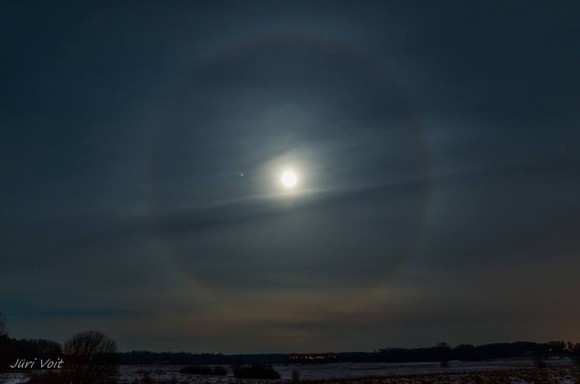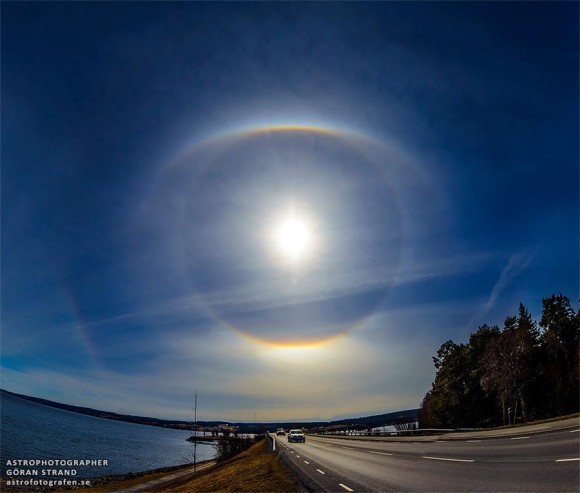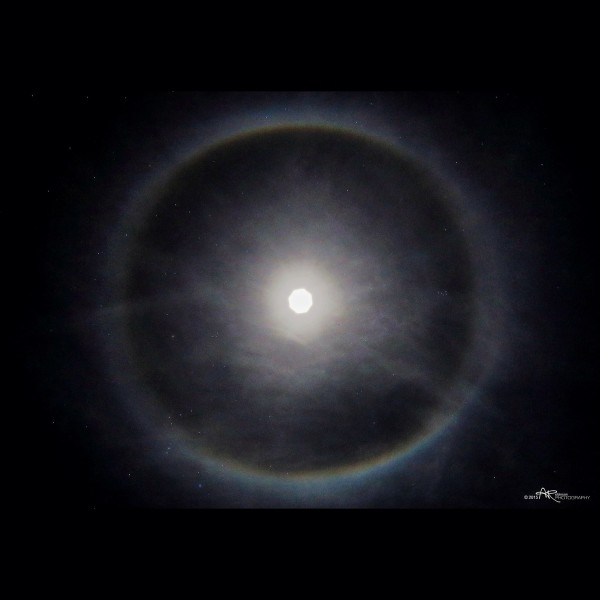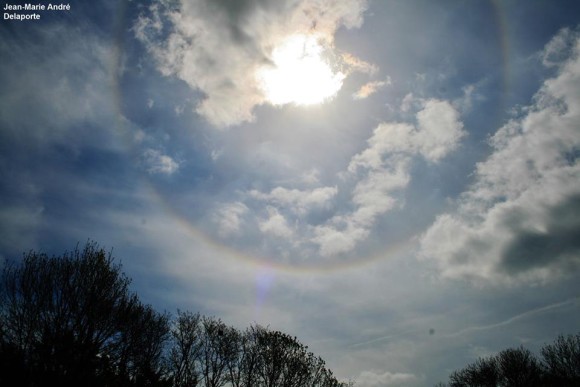A ring or circle of light around the sun or moon is called a halo by scientists. We get many messages throughout each year from people who’ve just spotted a ring around the sun or moon. People want to know: what causes a halo around the sun or moon? Follow the links below to learn more about lunar and solar halos.
What makes a halo around the sun or moon?
If you see a halo, notice this!
What makes a halo around the sun or moon? There’s an old weather saying: ring around the moon means rain soon. There’s truth to this saying, because high cirrus clouds often come before a storm. Notice in these photos that the sky looks fairly clear. After all, you can see the sun or moon. And yet halos are a sign of high thin cirrus clouds drifting 20,000 feet or more above our heads.
These clouds contain millions of tiny ice crystals. The halos you see are caused by both refraction, or splitting of light, and also by reflection, or glints of light from these ice crystals. The crystals have to be oriented and positioned just so with respect to your eye, in order for the halo to appear.
That’s why, like rainbows, halos around the sun – or moon – are personal. Everyone sees their own particular halo, made by their own particular ice crystals, which are different from the ice crystals making the halo of the person standing next to you.
Enjoying EarthSky so far? Sign up for our free daily newsletter today!
If you see a halo, notice this! Because moonlight isn’t very bright, lunar halos are mostly colorless, but you might notice more red on the inside and more blue on the outside of the halo. These colors are more noticeable in halos around the sun. If you do see a halo around the moon or sun, notice that the inner edge is sharp, while the outer edge is more diffuse. Also, notice that the sky surrounding the halo is darker than the rest of the sky.





Bottom line: Halos around the sun or moon happen when high, thin cirrus clouds are drifting high above your head. Tiny ice crystals in Earth’s atmosphere cause the halos. They do this by refracting and reflecting the light. Lunar halos are signs that storms are nearby.
- www.earthsky.org